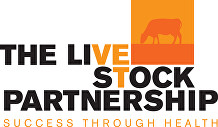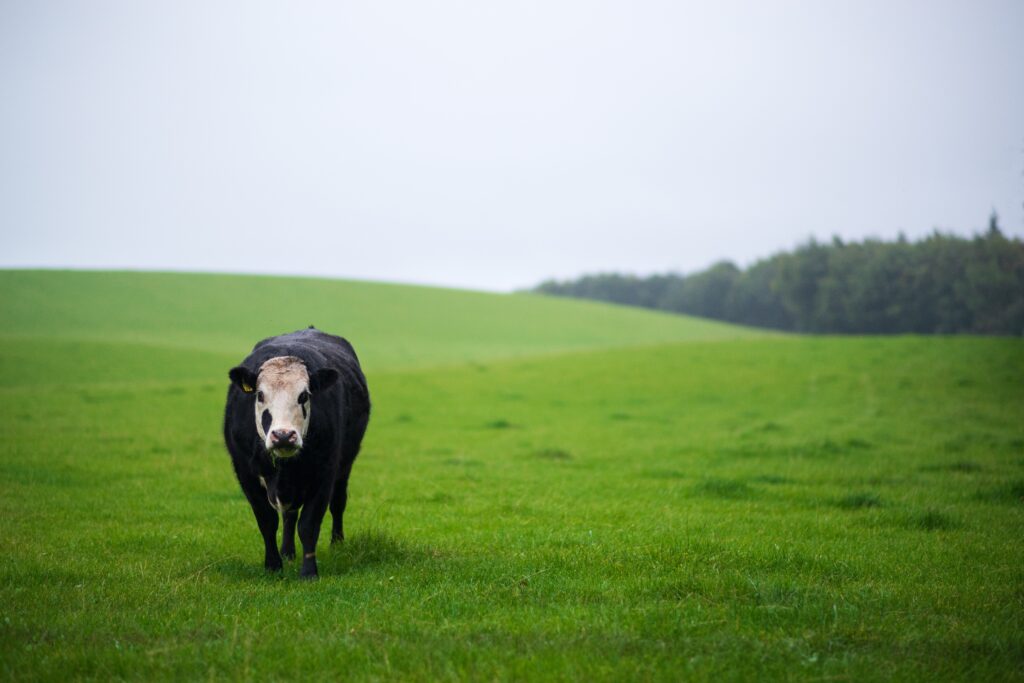Produced using original material by the George Farm Veterinary Group.
Introduction
As farm vets we will often get called out to attend a ‘down cow’, but there is a subtle difference between the
presentation of the acute down cow and of the cow suffering from what is referred to as ‘downer cow
syndrome’.
Any cow that has been unable to rise and been down for more than 24 hours falls under the
clinical term ‘Downer Cow’, irrespective of the initial cause of her recumbency.
The primary reasons for recumbency generally fall into one of three categories – toxic, metabolic, and
traumatic. These need to be addressed as a matter of urgency, but if the cow is not responding to treatment
then the situation starts to become gloomier.
Once down for over 24 hours they develop significant secondary health problems, specifically: ‘a pressure
induced ischemic muscular necrosis’ – in other words muscular and nerve damage to the larger muscles of the
back legs, leading to an ever-reducing ability to rise and recover successfully.
Pathology of Muscular Necrosis
The muscles of the hindlimb are compressed by the weight of the cow leading to a reduction in lymphatic and
venous drainage, while arterial pressure and flow is maintained. Interstitial fluid volume and pressure within
the tissues increases leading to ‘compartment syndrome’. The severity of pressure-induced damage is
dependent on anatomy, duration of compression and surface on which cow is lying. Larger, heavier cows on
concrete do worse than smaller, lighter heifers on straw
The level of nursing care and attention to the animal’s needs will directly influence the outcome and success
of treatment.
Primary Causes for Recumbency
Around 40% of all ‘downer cows’ come under the metabolic cause for recumbency, generally hypocalcaemia.
You might also want to consider magnesium, phosphorous, ketosis and acidosis. Toxic causes include mastitis,
metritis, dead decomposing foetus, traumatic reticuloperitonitis (wire disease), RDA/volvulus/intussusception
(twisted gut), peritonitis or overwhelming abdominal catastrophe.
Traumatic causes include pelvic or limb fracture, sacroiliac luxation (hip dysplasia), stifle injury/patellar
luxation and calving/dystocia related issues, such as twisted uterus and obturator, sciatic or peripheral nerve
damage.
Other less common reasons for recumbency may include infection and pyrexia (high temp), tetanus or
botulism and even severe lameness/foot injury.
BCVA GUIDANCE – DOWNER COW & HIP HOISTS updated February 2022
Examination
A full and careful clinical examination is needed to identify the primary cause of recumbency and level (if any)
of response to treatment.
Calving history – when, any intervention/complications…
Length of recumbency so far and what attempts have been made to move or lift. Any response…
Any treatment given. What, when and how much?
Bloods – Calcium, Magnesium, Phosphorus, ketones (energy levels).
The impact of prolonged recumbency and muscular damage can then be assessed, and a treatment plan and
prognosis given.
Treatment
Move cow onto soft, clean bedding. Deep straw, deep sand (20cm minimum) or ideally out to grass if weather
allows. Provide good quality feed and clean fresh water at all times. Roll, turn or lift cow every 3-4 hours to
prevent, or at least reduce, the onset of tissue damage.
A hip hoist can be a useful tool to lift ‘downer’ cows to prevent them from suffering pressure related injury.
The criteria for use is:
The cow must be free from injury such as broken leg, dislocated hip or other joint damage.
The cow should be checked for signs of illness or metabolic disease e.g. toxic mastitis, milk fever and
treated accordingly.
Whenever possible, only lift cows over a soft surface e.g. straw bed or pasture.
Ensure adequate height over the cow for her to be safely lifted using a loader.
Attach the hip hoist firmly around the tuber coxae as indicated by the red area in the diagram:
Lift the cow slowly with a loader or tractor as vertically as possible until in a normal weight bearing
position. The idea is just to help the cow to stand, not to lift her up in the air.
If the cow will stand, leave her with the hoist on for 15-20 mins. If she won’t bear weight, lower her
down again after 2-3 mins.
If she is unable to support her front end, she may require additional support of her front legs. Consider
using a strap behind her front legs in her girth area.
Don’t remove the hoist from the cow in a standing position unless you are certain she is fully weight
bearing and there is no risk of her staggering onto concrete.
Ensure the primary cause of recumbency has been rectified or is under an effective treatment regime.
Consider the use of non-steroidal anti-inflammatories, such as Metacam (2.5ml per 100kg s/c) or
Rimadyl (1ml per 35kg s/c) as indicated.
Prognosis
If down for over 48 hours, then a guarded prognosis is given. Once down for 4-5 days then a poor prognosis
should be given. Ongoing assessment should be made throughout. If the cow is bright, alert, responsive, eating,
drinking and attempting to rise then recovery is possible. However, if the cow becomes listless, stops
eating/drinking and is losing condition, then welfare considerations may dictate euthanasia.
Useful link
RSPCA has guidance for their assurance scheme on page 46 of their Welfare Standards for Dairy Cattle
document.
https://science.rspca.org.uk/documents/1494935/9042554/RSPCA+Dairy+Standards.pdf/bb1a2971-8018-
b325-8dcc-d6b590fcd955?t=1625822966824
Thanks to George Farm Veterinary Group for their invaluable contribution to this document
Get in touch to find out more about how we can help you

